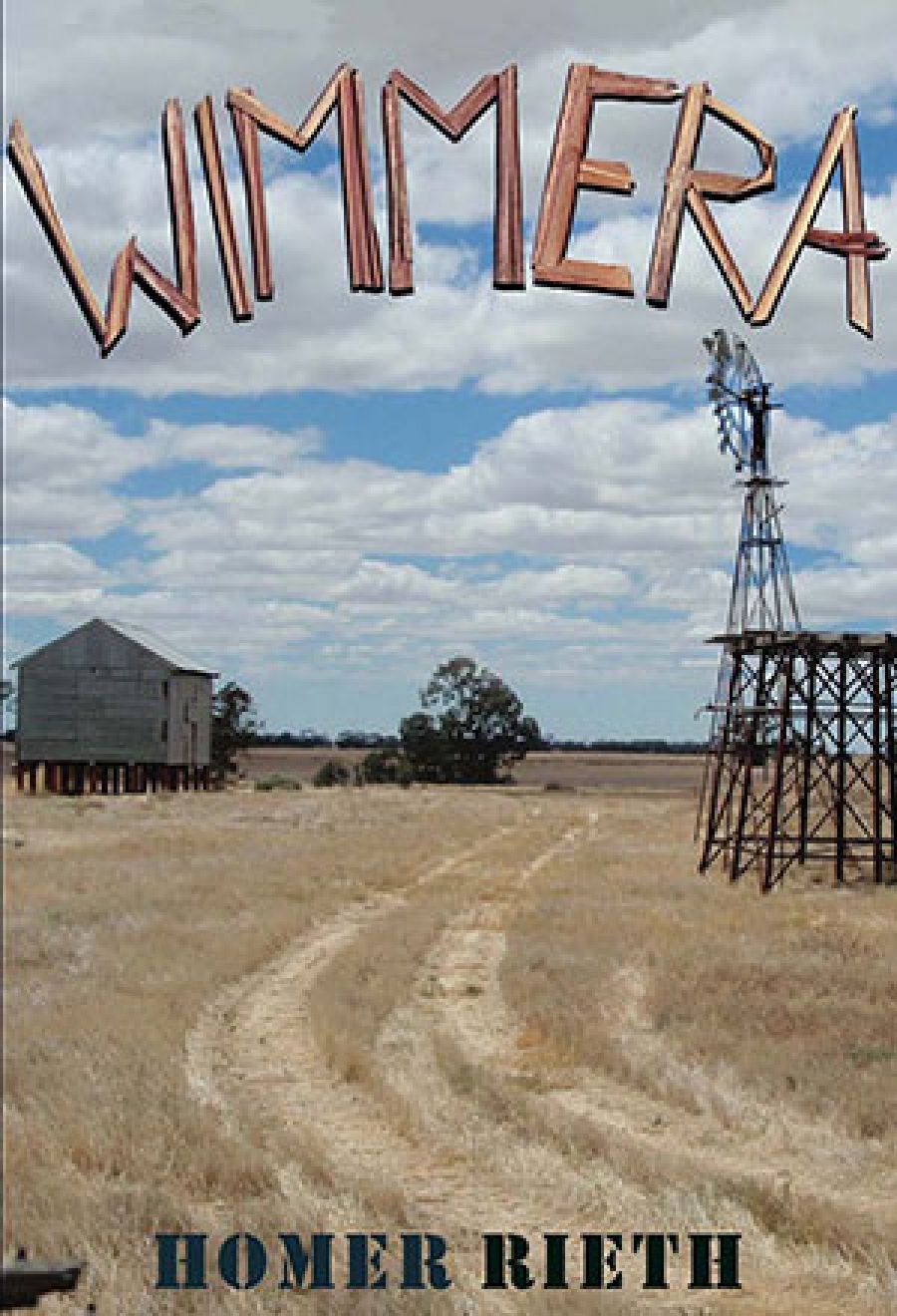
- Free Article: No
- Contents Category: Poetry
- Review Article: Yes
- Article Title: Knuckled earth
- Online Only: No
- Custom Highlight Text:
That Homer Rieth is one of the finest lyric poets writing in Australia was apparent with the publication in 2001 of his collection The Dining Car Scene. Now, with Wimmera, his lyric strengths are displayed in epic form. Presented in twelve books and 374 pages, initially titled ‘A Locale of the Cosmos’, grand in conception and impressively detailed in execution, this is a significant achievement indeed, and a major contribution to Australian literature.
- Book 1 Title: Wimmera
- Book 1 Biblio: Black Pepper, $29.95 pb, 374 pp
- Book 1 Cover Small (400 x 600):

Nevertheless, though its reach is vast, Wimmera is grounded in the local. The poet works as botanist, geologist, meteorologist, archaeologist, farmer and cultural historian, incorporating many voices within the narrator’s tireless curiosity, generosity and celebratory mode, and introducing them so often with ‘you see he says’ or ‘tells me he does’. Yarns mix easily with reports, observations and enquiries, the present with the past; the language is both colloquial and learned. As Rieth knows, naming conjures things to life and significance. There are memorable litanies here of places, geographical features, people and practices. Paying court to local history, glossing specific detail with the intrigue of suggestion, they also have a cumulative and lyrical power.
In the poetry of Wimmera, whatever the referent, there is a fine degree of self-conscious attention to language. Book Nine, ‘Marnoo’, includes a section that exemplifies the epic’s procedure. Beginning with a deceptively casual portrait of a little girl who looks ‘so like a McAllister’, plays hopscotch and sings ‘London Bridge and Camden Town’, it includes an echo of lines from Hamlet, refers to Minyip as ‘a locale of the cosmos’, and then, after Whitman, presents a two-and-a-half page list of sharply particularised names of district people. It concludes:
I speak of them all and of those I have left un-named
they too shall be remembered
the town aristocracies and the in-betweeners
the upside-downers and the inside-outers
the ‘blow-ins’ the blown around and the blown out
I speak of a place that touches upon all places
that was and still is
one of a kind
The poetic embrace is typically inclusive, and also affectionate. Everything is precious and worth attention, from the people introduced by name and through their myriad activities to the detail of landforms, geological substrata, plants, animals and the overarching sky.
There is a journey at the heart of this epic, not one centred on Ithaca or Paradise but ranging across place and time, involving discovery and recovery. This perspective is repeated with many variations. In its simplicity and complexity, the journey motif prefigures all movement and discovery, and its possibilities are endless. Not the classical journey of the wandering hero, not Joseph Campbell’s monomyth in its archetypal dimensions, the traveller’s journey in Wimmera is less concerned with monumental figures and stages than with the spirit of place as it may be experienced by mortals. It is littered with names rich in associations – Lubeck, Wal Wal, Glenorchy, Callawadda, Minyip, Navarre, Ashens, Sheep Hills, Marnoo, Dimboola, Nhill, Wycheproof – and its vast collection of characters includes such figures as hard-riding Dan Morgan, Mister Bolton, Searcher of Customs for the Wimmera, Nagassa Singh the Indian hawker, Sister Murray in her old Austin Seven, and any number of farmers, towns-folk, knockabout workers, wanderers and yarn-spinners, men and women, as the local becomes legendary and then mythic.
Coming to vivid life in the poetry, this is a landscape of knuckled earth, flat plains, rivers and creeks, trees, grass, farmers’ paddocks, sheep and cattle, roads and railway lines, silos, shacks, homesteads and towns. It is filled with sunlight, mist, shadow and the shifting sounds of human activity.
Wimmera is an epic that reads like a wonderfully expanded lyric. Finely detailed, wide-ranging, democratic in spirit, inventive and celebratory, it presents a moving testament to a particular part of the Australian landscape, to its forms and history, as well as a profound sense of how definitions and understandings are made, change and pass on. As Homer Rieth shows, space is negotiable, time shifts gears and the moment may be infinitely valuable.


Comments powered by CComment